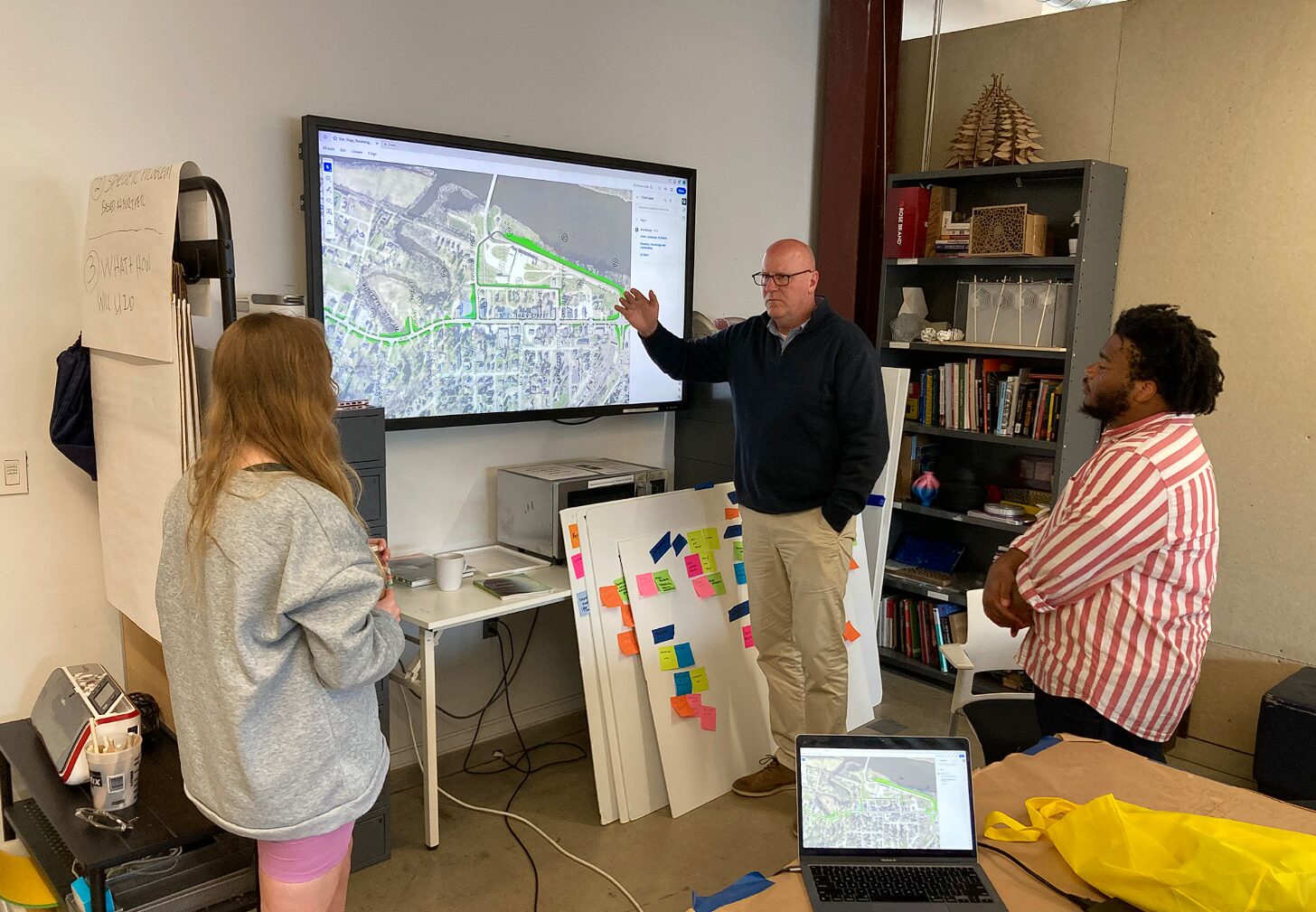
VAN BUREN, Maine — What began as a professor’s Google search led to a collaboration between a Philadelphia university and a northern Maine border town more than 700 miles away.
Last year, the town of Van Buren was selected as one of 17 communities in the country for a Citizens Institute on Rural Design grant. The grant has no monetary value, but it is still creating unique opportunities including the town’s collaboration with the Drexel University Westphal College of Media Arts & Design.
The 10-week project involves the creation of 10 to 12 art pieces that will sit on granite posts along the town’s historical pathway. The pathway connects to town parks and the boat landing, and runs along the St. John River and Violette Stream.
The art pieces will be cast in bronze, and stand between eight and 12 inches tall. They will depict important landmarks related to the town’s history, such as the Hammond Hotel, The Violette Grist Mill and the St. John River Ferry.
Van Buren Town Manager Luke Dyer said the project would have cost the town around $60,000.
The CIRD grant, which is supported by the National Endowment for the Arts, provides national connections for communities and helps them apply for grants and funding for municipal projects.
Scott Schmidt, a professor at Drexel, Georgetown, and Clemson universities, said that one day he was thinking about rural design as it relates to urban design. This led to a Google search for “Rural Design,” which led to Schmidt discovering the CIRD program.
“I found out about the work they were doing and just cold called them,” he said. “I said that I work with students across a few different universities and we’re looking for projects where we can work more in the realm of practice as opposed to theory.”
CIRD officials invited Schmidt to attend a few Zoom meetings with their communities, and it was here that he watched Dyer speak about his community.
“I thought that his case and, most importantly, his love of Van Buren, Maine, was really impressive,” Schmidt said.

He said Dyer seemed like the type of person who would pick up the phone throughout the process, which is crucial. He added that CIRD officials also recommended working with Dyer.
Dyer said that he and Schmidt had several meetings before the class, which consists of six students, even began. And when the class started, Dyer actually traveled down to Philadelphia to speak with the students. Schmidt said he was impressed that Dyer was so dedicated to the project that he would travel to the school in person.
He said that while learning about theory is important in academia, hands-on experiences like this project are vital for students.
The roughly dozen points along the walking path will also incorporate interactive technology. Schmidt said each pillar will transmit something new about the area to the traveler’s phone or tablet if they get close enough. He said this will be done either by QR codes or an app that incorporates tap technology.
“If somebody has the app open and they could simply walk by one of the installations and it would tell them about the history of the town or, for a limited period of time, it could give them a coupon for a small business in town,” he said.
He said this aspect of the project will be customizable, providing people with a continually novel experience.
“It’s not a one-trick pony,” he said. “It’s something that people can continually come back to.”
Students are now about halfway through the 10-week class. The final stage of the project includes a presentation of the artwork to Van Buren. Schmidt said students are hoping to eventually take a trip to the town.
“Hopefully at some point we can all get up there and meet some of the people we talked with and continue forward with the project,” he said. “I know that, after the 10-week mark, students will still be interested in what’s happening with the project and knowing where everything is.”
Dyer is hopeful that the project will revitalize interest in the town’s history.
“The history of the town has been documented in several books, but we want to make sure it’s not lost,” he said. “And part of that is creating an experience that reminds people to be proud of where they came from, to be proud of Van Buren again.”







